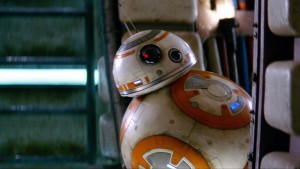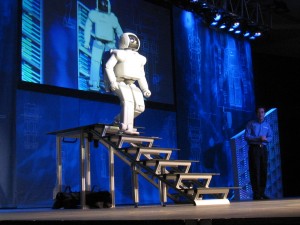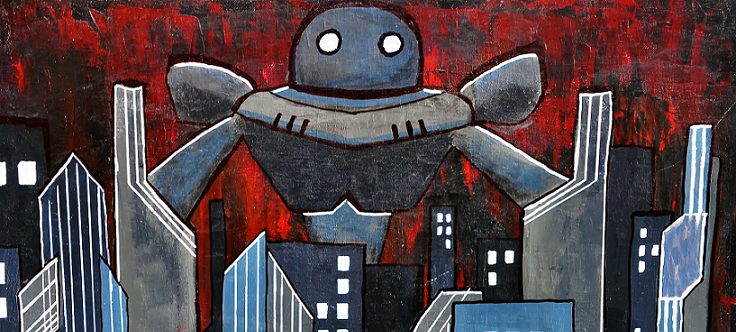From R2-D2 and C-3PO in Star Wars to Baymax in Big Hero 6, we are captivated by robots. They can be simultaneously entertaining, endearing, and inspiring. As films that incorporate these concepts seem to draw sizeable audiences, there must be something about these mechanical imitations of ourselves that resonates with us. Are we simply enamored with the technological complexity of these fantastical creations or is there something more? “Robots are ‘evocative objects’ that force us to focus on what is important while bringing research into the context of the real world,” said Brian Scassellati of Yale’s Social Robotics Lab. When robots are artificially intelligent — thus possessing the ability to perform humanlike tasks and “think” at a higher level — they capture our attention. At times, they even steal our hearts in films like Wall-E, but as these machines become more and more advanced, a new question has come up: Could these intelligent machines also steal our jobs?
Cracking the code on AI
The term “artificial intelligence” (AI) can be a controversial buzzword. It is a field that seamlessly integrates engineering, computer science, and cognitive science, among other disciplines, and it has many connotations that are both warranted and unwarranted. What likely comes to mind when someone mentions this field is advanced robots, whether they be benign like C-3PO, or dangerous like the Terminator. Consequently, it may come as a surprise that artificial intelligence had a less glamorous start.

One of the pioneers of the field of artificial intelligence was Alan Turing, a British mathematician. In order to crack the Nazis’ encoded messages with Joan Clarke and other fellow Bletchley Park code-breakers, Turing developed the bombe, a machine that worked to analyze — and break — the enemy’s codes. Although this machine looked from the outside like a set of stacked panels with spinning wheels, it was, in fact, one of the earliest artificially intelligent machines. What made the machine artificially intelligent was its ability to perform processes typically carried out by humans, specifically code-breaking. Although artificial intelligence can be incorporated into devices running the gamut from advanced robotics to your smartphone, the essence of artificial intelligence is the capacity of something to mimic human mental processes.
The unifying foundation of artificial intelligence — its ability to mimic the way people solve problems — is the root of why we find it so interesting: Through the development of this field, we can learn more about ourselves and how our brains function. Electrical wires are the robot’s version of neurons and the electric current is the equivalent of the electrical impulses that spark activity in the human brain. When a coder presses “run” on a program that powers an AI machine, she essentially breathes life into it.
Debug before you run
As artificially intelligent machines become more advanced, they raise increasingly tricky questions, for instance questions about whether these advanced machines will replace a large proportion of human workers in the near future. Although humans can be better understood through robotics and although human mental functioning serves as the inspiration for artificial intelligence, there is an essential difference between humans and robots: The latter doesn’t require sleep, pay, or a break from work.
In a world where the full potential of artificial intelligence is achieved, robots would be capable of learning, socializing, and thinking in the same advanced way as humans. With the rising momentum in regard to the development of this field, some worry that robots will soon be viewed as efficient, cheaper replacements for human workers. This is where the controversy within this field arises.

Wendell Wallach, ethicist in Yale’s Interdisciplinary Center for Bioethics and author of the book A Dangerous Master: How to Keep Technology from Slipping Beyond Our Control, provided some insight. Although full robotic replication of human functioning is something that likely will not occur in the foreseeable future, robots are currently capable of carrying out repetitive tasks involved in some jobs. “I would love AI to inspect every pipeline and bolt in a ship: mind-numbing jobs that need to be done, so to me those are the great breakthroughs,” said Wallach. At the same time, these are jobs that provide for people’s livelihoods, allowing them to support themselves and their families. Workers fear that their employers may only think of increased profit when deciding between human and robot worker, creating a society in where human workers are left destitute.
When asked about the best course of action, Wallach said that the process of artificial intelligence development is not one that can easily be slowed. Instead, a better course of action would be to develop policies aimed at adapting to the process more quickly. At the moment, this issue is primarily being discussed by individuals active in technology fields. In order for policy regulating the use of artificially intelligent machines to be made, our politicians to engage. Once everyone joins in, we can work together to address these concerns and adapt to the technological advancements. People bring much to their jobs other than productivity — compassion, dedication, and care, just to name a few. These cannot be easily provided by a robot worker, meaning human workers still a big role to play.
As the development of AI continues, we should seek to use artificially intelligent machines alongside human workers, allowing robots to, for example, retrieve dangerous materials that may harm a human. As a society, however, it is essential that we draw the line between the replacement of workers for robots in jobs that put human lives at risk and those that, although at times tedious, are what provide for individuals’ livelihoods.
Programming the future
If one were only to consider the dangers of the development of artificial intelligence, it would appear that the best course of action is to discontinue this field of research altogether. But where would we be if we had chosen this path over the course of past technological advancements? What if we had never developed the telephone or the computer? What if we had abandoned investment in advanced modes of transportation because of potential risks? With any new advancement comes risks and concerns. Fortunately, at the end of the day, it is us who decide whether or not robots will ever be serious competitors for jobs. Further, one should not view the field of robotics as one of doom and gloom. As with anything, there are pros and cons to the development of artificial intelligence, and when the right team is assembled — a team that understands the complicated, multidisciplinary nature of this field — the pros far outweigh the cons.
At the Yale Social Robotics Lab, robots are helping children learn. One particularly helpful robot serves as an aid in teaching English to native Spanish speakers in grades K-12. The children, who are often nervous about making translation errors in front of their teachers, feel much more at ease with the robot. Their mistakes can be tracked, allowing for tailored instruction for each individual student. Over the course of five sessions with the robot, it was found that all of the children improved their English-speaking abilities.

The positive impact of artificial intelligence is not limited to education. It spans from daily productivity to healthcare. Whenever you ask Siri a question, you are using artificial intelligence for convenience. Beyond daily applications, artificial intelligence is revolutionizing the way medicine is practiced. Online information banks like Modernizing Medicine help doctors diagnose symptoms that do not obviously point to a specific illness. It is worth emphasizing, however, that the doctor is still the one who makes the final call in these situations because her training and expertise is invaluable to her patients receiving proper treatment.
The capabilities of artificial intelligence are thrilling. Go, a complicated board game, was thought to be too complex for a machine to master till Google recently proved this assumption wrong. In March, Google’s AlphaGo program went head-to-head with the world’s best Go player, and reigned victorious in a best-of-five match. This is an exciting advancement in the development of artificial intelligence, demonstrating another boundary that has been broken down by skilled engineers and coders.
A call to action
Going forward, the field dedicated to developing artificially intelligent machines does not simply need people who are skilled coders and engineers. It needs ethically and politically literate individuals cognizant of the impact of their work. Having multiple perspectives will spark essential conversations about how to adjust to the changing world in which we live.
Just as we, as a society, have adjusted to numerous prior technological advancements, we can learn how to make advanced robotics work for us without allowing them to work in our place. With each new technological advancement, there are people who stand on both sides of issues. But these concerns are no reason to abandon a field that possesses so many benefits for society. Instead, as we have before, we must adjust to this new advancement. In a field with never-ending changes and development, our best path forward is one that embraces a quote from Alan Turing: “We can only see a short distance ahead, but we can see plenty there that needs to be done.”
Extra reading:
Wallach, Wendell. A Dangerous Master: How to Keep Technology from Slipping beyond Our Control. New York, NY: Basic Books, 2015.
About the Author:
Kendrick Umstattd is a freshman Electrical Engineering and Computer Science major in Berkeley College. She is a Copy Editor for the Yale Scientific Magazine and works as a research assistant in Yale’s Social Robotics Lab.
Acknowledgements:
The author would like to thank Wendell Wallach for his time and perspective on this issue. She would also like to thank Brian Scassellati for his enthusiasm and for the work his lab does to advance robotics so as to improve people’s quality of life.

